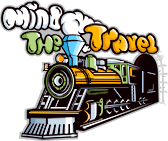Israel Travel Guide

A narrow strip of land nestled between Egypt and Jordan – Israel is a country steeped in history. It’s been populated for thousands of years, and the country is dotted with historical sites, ancient cities, sandy beaches, and has a huge cultural and religious significance. Israel hosts more and more travelers each year and not just as a place of pilgrimage.
Cities like Jerusalem, Nazareth, and Akko offer tons of history. At the same time, Tel Aviv and Haifa have vibrant nightlife and boast contemporary art galleries, glassy skyscrapers, and buzzing streets. Despite the seeming monotony of the landscape, it is really diverse. As you travel from South to North Israel, you discover not only deserted mountains and deserts, but also fertile valleys and palm groves. The country isn’t perfect with the confounding politics of the region. However, the country’s natural beauty, rich culture, and seaside resorts make it a welcoming spot for spending some time here.
Israel Travel Guide aims to give my readers only reliable travel information. This implies I don’t encourage any political discourse about Israeli-Palestinian relations. I also realize that a lot of things mentioned here originated or is common in other cultures of the Middle East or the Mediterranean.
Getting Around
Buses are the most popular and convenient means of transport in Israel. Trains are also quite accessible since they connect Ben Gurion airport with Haifa, Tel Aviv, and other major cities. Trains provide reasonably priced service for reaching Beer Sheva, Dimona, Ashdod, and Ashkelon.
If you find yourself in Israel on Saturday expect your trip to be more complicated. Public transport is very limited during the Sabbath day. This usually implies you have to pick taxi or sherut (a multi-seat van). Buses are available in Haifa on Saturdays, while trains don’t run at all from Friday afternoon to Saturday evening. For example, a bus trip from Tel Aviv to Jerusalem will cost around 9 USD. At the same time, a trip from Tel Aviv to Haifa costs 9-12 USD. A 5 hour long trip from Tel Aviv to Eilat costs 40 USD.
Israel Travel Guide – Accommodation
Dormitory rooms in hostels range from 19-33 USD per night, depending on the city. Privates in hostels cost around 30 USD. Budget hotels cost around 60 USD per night for a double room with free WiFi and A/C. However, there are always cheaper options. You may expect to pay around 40-60 USD for a studio apartment and 20 USD for a shared room through services like Airbnb. For those wanting to visit some distant places and live in the tent, campsites across the country offer accommodation option for 14-20 USD. Usually located next to national parks and historical attractions, campsites are great to get easy and quick access to them.
Israel Travel Guide – Food
The Western fast food is pretty expensive in Israel and will actually cost you more than local meals. A combo meal at McDonald’s cost around 13 USD. Meals like Falafel, Shawarma (doner kebab) or Tunisian sandwich come for less than 5 USD. Stick to local food to save extra money. For a meal at an inexpensive restaurant, expect to pay around 17 USD. Meal for two at a mid-range restaurant will cost as much as 60 USD. Groceries are expensive in Israel, so you may carry out your own research, on which supermarket is cheaper. My budget daily menu consisted of hummus with fresh pita, a salad made with tomatoes, garlic, onions, and lemon juice, falafel, and shakshouka. Well, maybe shawarma to diversify this list. It usually cost me 12-15 USD per day.


